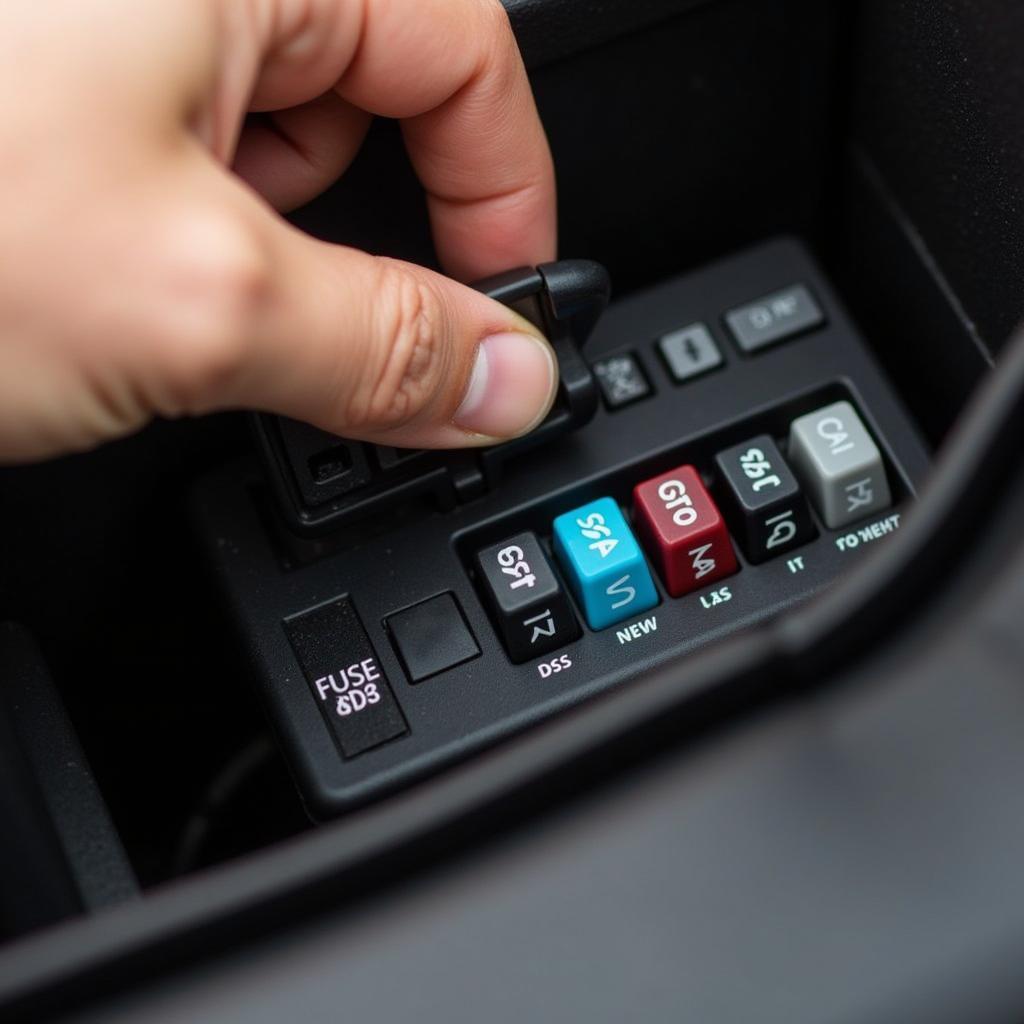A car parasitic draw test is essential for diagnosing a dead battery. This guide provides a step-by-step approach, helping you identify and resolve those pesky electrical gremlins draining your car’s battery. Learn the tools, techniques, and troubleshooting tips to keep your car starting reliably every time.
car battery parasitic draw test
A parasitic draw, often called a “phantom draw,” occurs when a circuit in your vehicle continues to consume power even after the ignition is off and the car is parked. This can range from a minor drain caused by a faulty clock to a major drain that completely depletes your battery overnight. Understanding how to perform a car parasitic draw test is crucial for every car owner. It empowers you to diagnose and fix the problem, saving you time and money on unnecessary repairs. This comprehensive guide will equip you with the knowledge and steps needed to confidently tackle this common car issue.
Understanding the Importance of the Car Parasitic Draw Test
Why is a car parasitic draw test so important? Simply put, it’s the key to identifying why your car battery keeps dying. Without this test, you’re essentially guessing at the problem, potentially replacing perfectly good parts or overlooking the real culprit. A phantom draw on car battery can be a frustrating and recurring problem. Performing a parasitic draw test allows you to pinpoint the exact circuit causing the drain, saving you from the hassle of a dead battery and costly repairs.
How to Perform a Car Parasitic Draw Test: A Step-by-Step Guide
Here’s a clear and concise guide on how to perform a car parasitic draw test:
- Gather your tools: You’ll need a digital multimeter capable of measuring milliamps, a test light, and possibly some basic hand tools to remove trim or access fuses.
- Prepare your vehicle: Park your car in a safe location, turn off the ignition, and remove the key. Close all doors, lights, and accessories.
- Connect the multimeter: Set your multimeter to DC amps and connect it in series between the negative battery terminal and the negative battery cable.
- Observe the reading: A healthy parasitic draw should be around 25-50 milliamps. Anything significantly higher indicates a problem.
- Isolate the culprit: Begin removing fuses one at a time, observing the multimeter reading after each removal. When the reading drops significantly, you’ve identified the circuit causing the excessive draw.
“A common mistake is using an analog multimeter. For accurate readings in milliamps, a digital multimeter is essential,” says automotive electrical expert, John Miller, ASE Certified Master Technician.
 Locating Car Fuse Box
Locating Car Fuse Box
Troubleshooting Common Parasitic Draw Issues
Once you’ve identified the circuit, further investigation is needed to pinpoint the specific component causing the drain. This may involve inspecting wiring, testing relays, or checking individual components within the circuit.
Common Culprits:
- Interior lights: Make sure all interior lights are off, including the glove box and trunk lights.
- Faulty alternator: A failing alternator can sometimes drain the battery.
- Bad relays or fuses: A stuck relay or a short-circuiting fuse can contribute to parasitic draw.
- Aftermarket accessories: Improperly installed aftermarket accessories can be a significant drain on the battery.
“Don’t underestimate the impact of seemingly small accessories. A faulty aftermarket radio or alarm system can drain your battery surprisingly fast,” adds Miller.
Preventing Future Parasitic Draw Problems
Regular maintenance and careful installation of any aftermarket accessories can help prevent future parasitic draw issues. Be sure to disconnect the negative battery cable when working on your car’s electrical system to avoid accidental shorts. If you notice any car battery discharge overnight, address it promptly with a parasitic draw test. Early detection and resolution can save you the headache of a dead battery and potentially more serious electrical problems down the road. For more insights into reviving a depleted battery, check out our guide on restoring a dead car battery.
Conclusion
The car parasitic draw test is an invaluable tool for every car owner. By mastering this simple yet effective procedure, you can diagnose and resolve battery drain issues, saving time, money, and frustration. Remember to follow the steps carefully, and don’t hesitate to seek professional help if you encounter complex issues. Knowing how to perform a car parasitic draw test empowers you to keep your car running smoothly and reliably.

